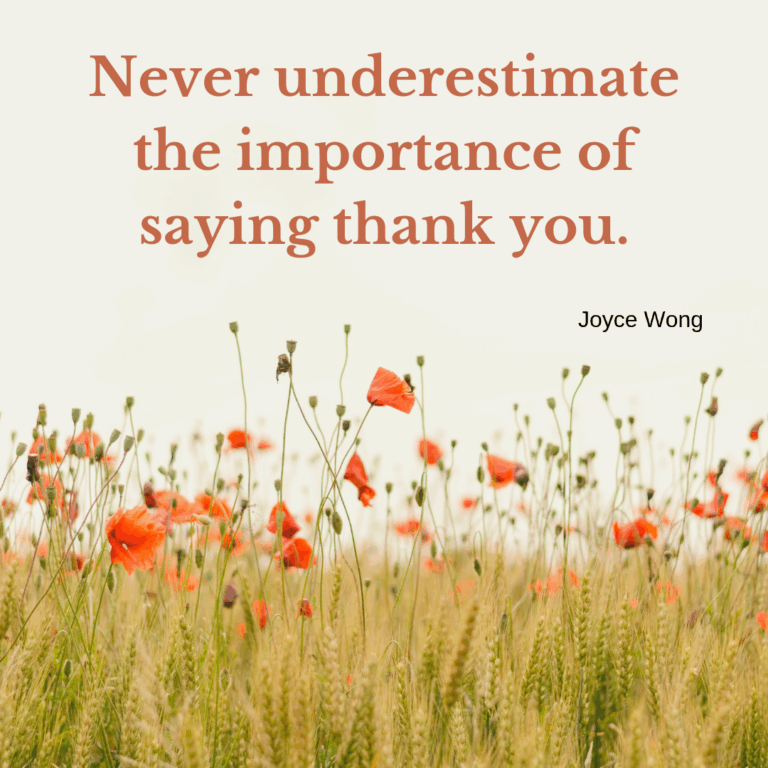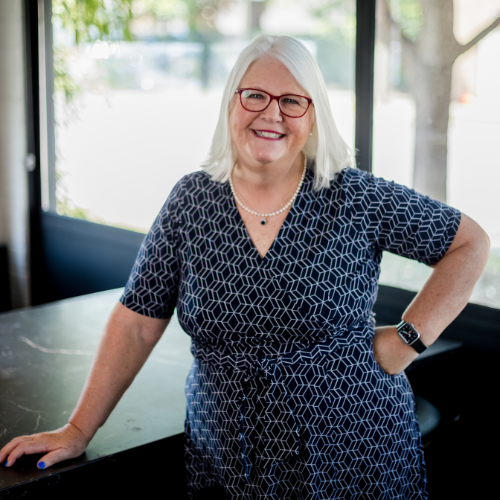
My mother never let a gift for a birthday, graduation, or wedding go unacknowledged. She instilled in me to always write a thank you note. After high school graduation, I couldn’t go out with friends until everyone was thanked for their gift. Even after my wedding, she called me daily to remind me that time was of the essence to get those notes out. “Someone took the time to think of you,” she’d say, handing me another thank you card to write. “The least you can do is take the time to thank them.”
I rolled my eyes as a teenager, but her lesson stuck. I have proudly passed that onto my children. Those who knew my mother won’t be surprised by this piece.
Today, as I work with nonprofit organizations, I see the costly consequences when that simple wisdom gets forgotten. Organizations will spend months crafting the perfect grant proposal or donor appeal, then let donors disappear into radio silence until the next ask comes around.
Meanwhile, somewhere across town, another nonprofit is sending handwritten notes, sharing impact stories, and building the kind of relationships that turn one-time givers into lifelong champions.
Here’s what most nonprofits get wrong: they think donors want recognition. A plaque on the wall, their name in the newsletter, maybe a fancy gala table. But what donors really want is connection—to know their gift mattered, to see the difference it made, to feel like a partner in the mission rather than just a checkbook with legs.
But here’s what’s interesting—my mother wasn’t stuck in the past. If she were fundraising today, she’d absolutely embrace video thank yous, personalized photos, and creative digital touches. The medium wasn’t the message; the genuine gratitude was. She understood that the art of thanking someone isn’t about the paper or the pen—it’s about making them feel seen and valued.
Yet somehow, in our rush toward efficiency and automation, many nonprofits have forgotten both the old ways and the new possibilities. They’re sending generic email receipts when they could be sending personal videos. They’re printing form letters when a quick photo of their program in action might mean so much more.
The Silent Crisis
The Fundraising Effectiveness Project’s latest data tells a story that would horrify my mother. Only 19.4% of new donors gave again in 2024, meaning 70% of donors give just once to an organization. Think about that for a moment—seven out of ten people who believed in your mission enough to write you a check never hear from you in a way that compels them to give again.
Donor retention has dropped 2.6% year-over-year, forcing nonprofits into an expensive hamster wheel of constantly replacing supporters. Bloomerang’s research shows it costs up to five times more to acquire a new donor than to retain an existing one, yet most organizations act as if donors are disposable.
The Math of Gratitude
Here’s what that silence is actually costing you: According to Virtuous’s 2025 Nonprofit Benchmark Report, increasing your retention rate by just 5% can lead to 20% revenue growth over five years. For an organization raising $4.2 million annually, that modest improvement in saying “thank you” translates to over $5 million—an extra $800,000 from better manners alone.
Meanwhile, 23% of donors churn within just six months of their first gift. You have a narrow window to make them feel valued, and most organizations waste it.
The Competitive Reality
While you’re maintaining radio silence, competition for attention and dollars is fiercer than ever. Other nonprofits are building relationships with handwritten notes, personal videos, and authentic impact updates. They’re not just thanking donors—they’re making them feel like partners.

The Association of Fundraising Professionals reports that the number of donors who return after lapsing has decreased 8.6% year-over-year. Once you lose them to a more grateful organization, you’re probably not getting them back.
These aren’t obscure academic studies—this is data from the platforms and organizations our sector relies on daily: Bloomerang, the Fundraising Effectiveness Project, Virtuous. The crisis is hiding in plain sight.
Beyond the Handwritten Note
Remember what I said about the medium not being the message? The genuine gratitude is what matters. Here are creative ways organizations are giving thanks to their donors:
- 30-second personalized videos from staff or beneficiaries
- Photo updates showing the donor’s specific impact
- Voice messages or voicemails from program participants
- Thank-a-thons with board members making personal calls
- Handwritten notes from volunteers or beneficiaries
- In-person visits for major supporter
Here’s what gratitude looks like in practice: A nonprofit radio station created video thank yous using DJs and artists to thank donors. A group serving children had them hold handwritten thank you signs and took photos. An animal shelter filmed their new facility, highlighting how happy the dogs were in their bigger yard. A sailing program for children with learning differences had participants sign a photo of themselves on the water.
The key message: creativity matters, but authenticity matters more. Remember that personally thanking donors when the gift is fresh is crucial—recognition shouldn’t replace gratitude, it should enhance it.

Best Practices for Donor Thank Yous
- Promptness: Send acknowledgments as soon as possible after a donation is received
- Personalization: Address donors by name and tailor the message to their giving history
- Inclusiveness: Don’t just thank major donors; acknowledge all gifts, regardless of size
- Variety: Use a mix of communication methods—emails, handwritten notes, phone calls, videos
- Impact Reporting: Show donors how their contribution is making a difference
- Engagement: Include opportunities for donors to get more involved
What Would My Mother Do?
Before sending any donor communication, ask yourself these simple questions my mother would have asked:
- Would this make someone feel truly appreciated? Not just acknowledged—genuinely valued for their thoughtfulness.
- Is this personal enough that they know I took time with it? Generic feels lazy. Personal feels grateful.
- Does this show I understand what their gift means? Connect their donation to real impact, not just organizational needs.
- Would I be proud to put my name on this? If you wouldn’t sign it personally, don’t send it from your organization.
- Have I thanked them recently for something other than giving money? Appreciation shouldn’t only come with your hand out.
When you can answer “yes” to all five questions, you’re following my mother’s rule. When you can’t, you know exactly what needs to change.
Your Next Steps
My mother would tell you that good manners aren’t optional—they’re the foundation of every lasting relationship. The same is true for donor relationships.
This week, do three things:
- Audit your last ten donor thank you messages. Run them through the “What Would Your Mother Do?” test. How many pass?
- Pick your most creative team member and challenge them to design three new ways to thank donors that cost less than $5 but feel like a million.
- Set a goal to thank one donor this week in a way you’ve never thanked anyone before. Then watch what happens to that relationship.
Your donors believed in your mission enough to support it financially. The least you can do is take the time to thank them properly. My mother would expect nothing less—and neither should your donors.
What would your mother do? More importantly, what will you do?


